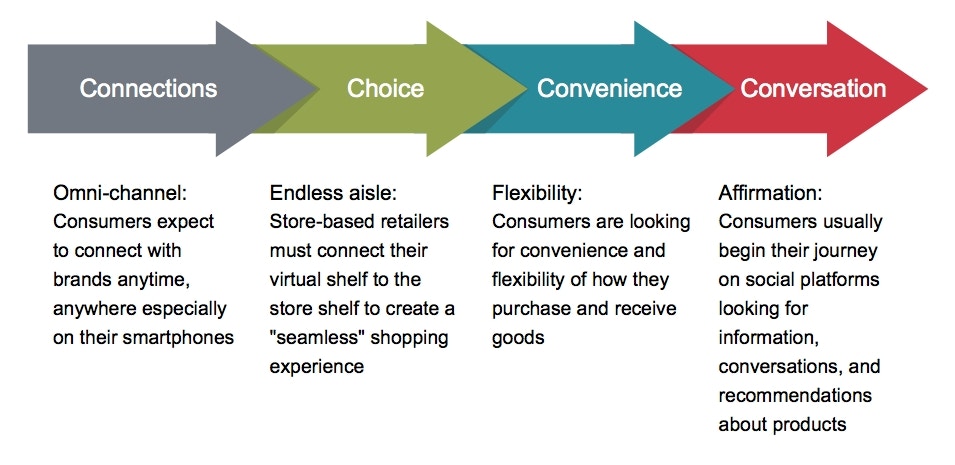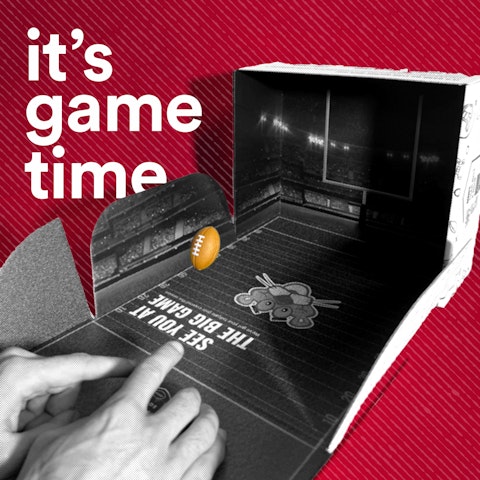Consider the brands that refused to adapt at the pace of technology, many of them are ancient history. Think Borders Books, Kodak and Tower Records.
The stats can't be ignored, 71% of shoppers rate the Internet as extremely important when choosing a product, 73% of consumers participate in the practice of show-rooming (browsing on the Internet from smartphone while in-store) and 88% of consumers participate in web-rooming (browsing first on the Internet then buying in-store).*
Large retailers and consumer facing brands are well versed in these techniques already so now is the time for building materials manufacturers to take notice, understand and pivot towards a more digitally sophisticated customer. So understanding not only what omni-channel means but the opportunity it represents for your strategic goals should be on your radar as you plan for 2015.
Omni-channel differs from similar buzzwords like cross device, multi-channel and cross channel. So let’s start with defining what these terms mean.
Cross device targeting: Where is your advertising serving? Cross device is the ability to serve targeted advertising to consumers across multiple devices. At its core it’s focusing on the customer, versus siloed approaches to web, mobile web and app. Ideally a single ad serving platform should pinpoint demographic parameters and the devices that align with those targets will follow suit.
Multi-channel marketing: A comprehensive approach to using a combination of channels that include digital, social, analog and retail and enabling customers to engage using the channel they’re most apt to align with.
Cross channel marketing: Integrated campaigns that reach across channels and devices versus those that are run simultaneously in various channels. Cross channel is essentially using one channel to support another. For example, cart abandonment on the web, followed up with an email. Cross channel campaigns can be complex but rewarding and are also considered the foundation of omni-channel.
Omni-channel: Insiders are now viewing omni-channel as a truly disruptive movement. The opportunity is not so much the technology, that’s just the delivery mechanism. It’s the philosophy, and heavy lifting, of creating a seamless brand experience through all available channels.
The opportunity a retailer in particular has with omni-channel is to track and influence customers across channels, and to align all digital and physical interactions to ensure it’s a consistent experience. We’re seeing pundits label omni-channel as “cross channel done well.”
This philosophy is also in accord with the 4 c's of consumer centric marketing. The graphic below displays the pillars of a customer experience built for an audience on the move.**
The focus of omni-channel is the seamless convergence of the digital and physical worlds and retail is at the nexus of the experience. So a concerted effort to align everything from pricing and product selection through in-aisle experience is a monumental shift in thinking, but a necessary and beneficial approach that can truly enhance the way your customer interacts with your brand with the ultimate goal of impacting your bottom line.
For retailers, omni-channel serves as the enabler of serving customers on-demand and ensuring they have the experience you want them to have. Empowering your customers with this singular experience throughout all brand touch points in the purchase process is defining the new normal.
For example, a customer at Lowe's is searching for 25 brushed nickle door handles, however the store only has 17 left. In an omni-channel world, that customer should be able to access their store or brand app, place an order for the exact same sku and price point and have the remaining handles delivered to their home in 2 days.
Achieving omni-channel perfection is an interdisciplinary effort that includes stakeholders from marketing, design, technology, operations and sales. These teams need to work together to deliver the ultimate goal of creating a singular customer/brand experience regardless of device, location and physical or digital touchpoint.
We’re at a critical mass now that consumers are not only preferring the optimized omni-channel experience but they now expect it. Interrupt helps building product manufacturers navigate the complexity of omni-channel marketing. Our team has the experience and resources to be able to asses your current landscape, and to help you craft a strategic plan built for a relationship with the “always on” customer.
*Accenture Retail Study 2013, Capgemini 2012 Digital Shopper Relevancy survey
**Source: Dr. Chris Petersen




